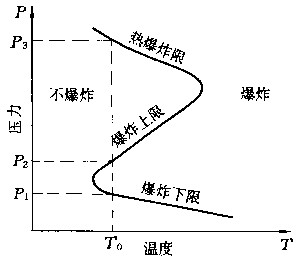1) explosive loading


爆炸加载
1.
Fragmentation behavior of tungsten heavy alloys under explosive loading;


爆炸加载条件下高密度钨合金破碎性的实验研究
2.
Fragment distribution of tungsten alloy under explosive loading;


爆炸加载下钨合金破片分布的试验研究
3.
The fracture morphology and microstructure of Uranium-Niobium caused by explosive loading were investigated.
结果表明:U-Nb合金在爆炸加载下的断裂方式为剪切断裂;破片组织内部发现因高速应变引起的大量的绝热剪切带,靠近绝热剪切带的基体晶粒发生明显的拉长变形;破片中存在大量的微裂纹,裂纹沿着绝热剪切带扩展,当与沿壳体环向的拉应力形成的纵向主裂纹相交汇时,形成破片。
2) blasting loading


爆炸加载
1.
This paper establishes the experimental system of rock s constitutive relation under blasting loading and indicates that the planewave producer is a suitable method to study rock s constitutive relation in ordinary blasting laboratory.
建立了爆炸加载条件下岩石动态本构关系的实验和量测系统,通过研究认为平面波发生器是更适合于作为一般爆破实验室研究动态本构关系的手段。
3) inside explosive loading


内爆炸加载
4) blast loading


爆炸荷载
1.
The studies on blast loading and blast effects on RC structures;


爆炸荷载及爆炸对RC结构影响的研究
2.
Lethality rate of building collapse to blast loading;


爆炸荷载作用下建筑结构倒塌的致命率
3.
Analysis of dynamic respo nses and failure modes of R/C beams under blast loading;


爆炸荷载作用下钢筋混凝土梁的动力响应及破坏形态分析
5) Explosive loading


爆炸载荷
1.
Strain field and damage analysis of clamped square plates subjected to explosive loading;


爆炸载荷作用下固支方板的应变场及破坏分析
2.
Large deformation in the energy-absorbing unit of a multi-row steel pipe structure under explosive loading is of great significance to the design of an explosion-resistant energy-absorbing unit.
钢管拼装吸能元件在爆炸载荷作用下的大变形问题,对于抗爆结构的吸能装置设计具有重要意义。
3.
Cylindrical explosive devices were used to develop the dynamic fracture criteria of thin cylindrical shells under internal explosive loading.
以柱形爆炸装置为研究对象 ,讨论了其薄壁壳体在爆炸载荷下的动态断裂准则。
6) blast load


爆炸荷载
1.
Finite element analysis for CFST columns under blast load;


爆炸荷载作用下钢管混凝土柱的有限元分析
2.
Optimal design of RC panels against blast loads using energy-based approach;


爆炸荷载作用下RC单向简支板的优化设计
3.
Dynamic response and failure modes of RC column under blast load;


爆炸荷载下钢筋混凝土柱的动力响应及破坏形态分析
补充资料:爆炸
| 爆炸 explosion 一个化学反应能不断地自我加速而在瞬间完成,并伴随有光的发射,系统温度瞬时达极大值和气体的压力急骤变化,以致形成冲击波等现象。 爆炸可以分为两类:①热爆炸。当一个放热的反应的放热速率大于散热速率时,促使反应系统温度升高,而温度升高又使反应速率和放热速率更为增大,如此循环,最终导致爆炸。②支链爆炸。系统中发生支链反应,链的支化速率超过终止速率,使得系统内活性组分数目急剧增加,反应在等温下自动加速而导致爆炸。
有些系统(如按一定比例混合的氢气和氧气)在一定温度下的反应速率与体系压力有关,如图 1所示。当系统温度为T0,压力低于P1 或在 P2、P3之间时,反应平缓进行,而当系统压力在P1、P2之间或高于P3时,反应以爆炸形式进行。P1、P2 、P3分别称为爆炸下限、 爆炸上限和热爆炸限。系统的爆炸界限随温度而改变。
可燃气体在一定的比例范围内与其他气体(如空气)混合,一经点燃也会发生爆炸。这种混合气的组成范围,为安全生产的极限。 |
说明:补充资料仅用于学习参考,请勿用于其它任何用途。
参考词条

